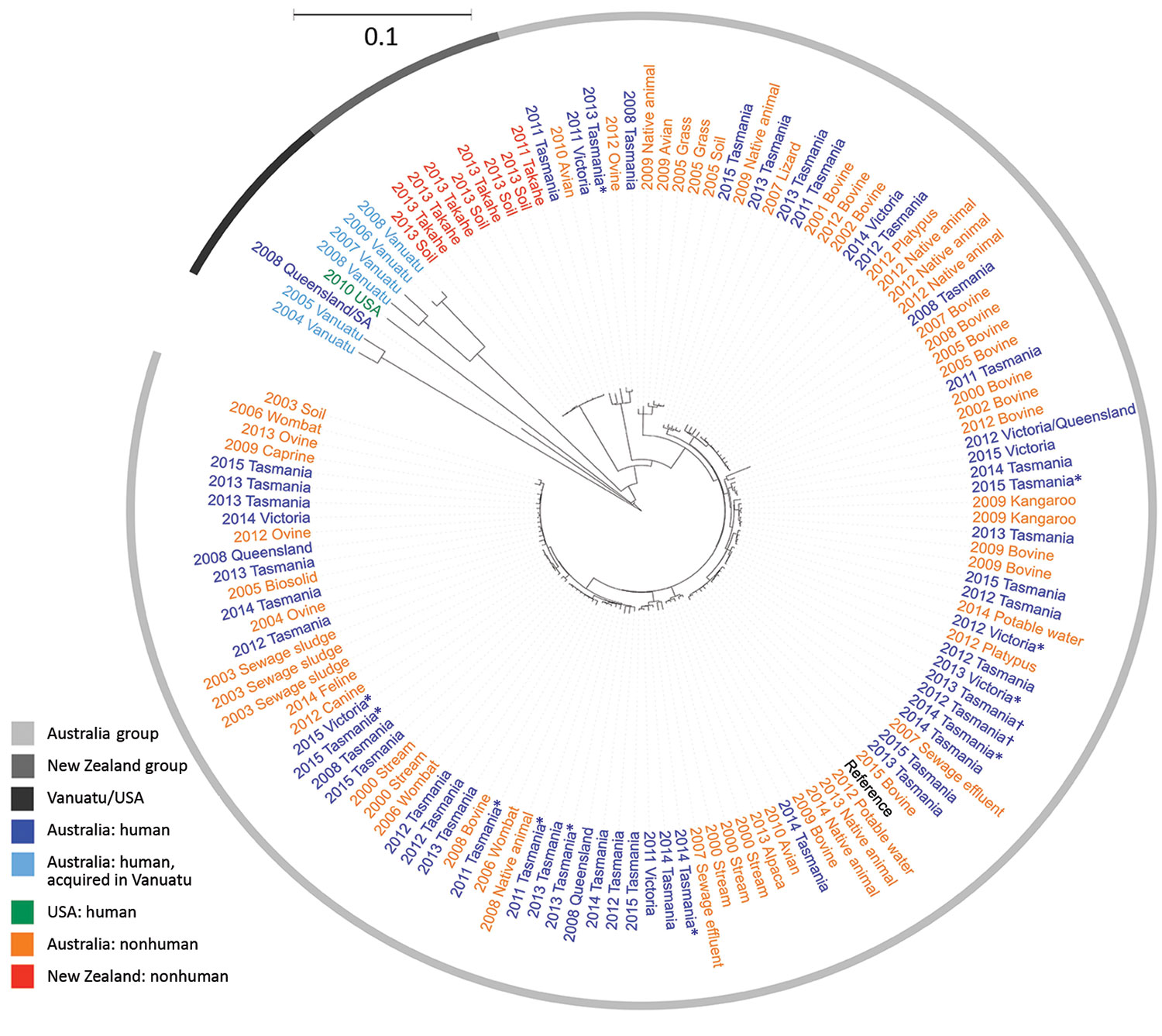Volume 25, Number 9—September 2019
Research
Whole-Genome Sequencing of Salmonella Mississippi and Typhimurium Definitive Type 160, Australia and New Zealand
Figure 3

Figure 3. Maximum-likelihood phylogeny of 132 sequenced Salmonella enterica serovar Mississippi isolates from Australia and New Zealand and reference isolates, inferred from 8,573 core single-nucleotide polymorphisms. Nodes are labeled with isolation year, isolate source if nonhuman (all from Tasmania), and Australia state of acquisition or residence if human. Tree visualized with iTOL (https://itol.embl.de) and midpoint rooted. Scale bar indicates nucleotide substitutions per site. *State of residence was used instead of state of acquisition because no travel data were available; †investigated as part of an epidemiologic cluster.
Page created: August 20, 2019
Page updated: August 20, 2019
Page reviewed: August 20, 2019
The conclusions, findings, and opinions expressed by authors contributing to this journal do not necessarily reflect the official position of the U.S. Department of Health and Human Services, the Public Health Service, the Centers for Disease Control and Prevention, or the authors' affiliated institutions. Use of trade names is for identification only and does not imply endorsement by any of the groups named above.